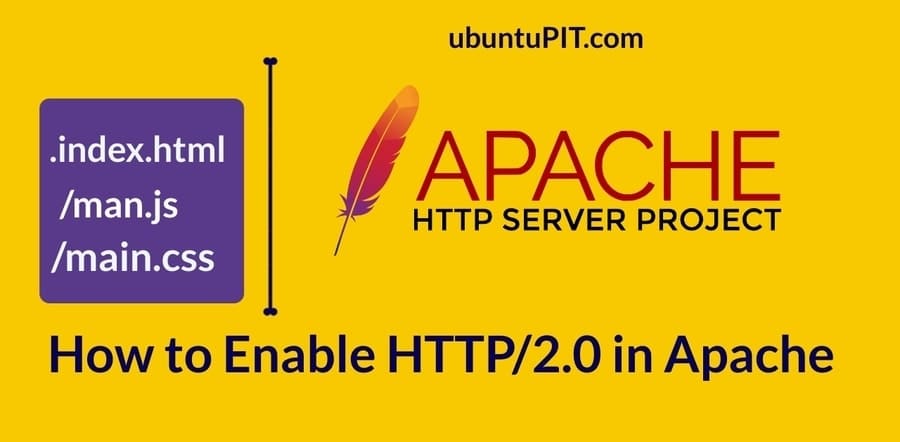Apache Http2 Module
- Enable Http2 Apache
- Apache Http/2 Module Download
- Apache 2.2 Http 2 Module
- Apache Module Proxy Http 2
- Apache Http/2 Module Tutorial
- Http2 Magic Settings
After enabling and loading necessary Apache modules, navigate to your Apache configuration directory and edit Apache configuration. To enable HTTP/2 on your Apache web server add one of the following to your global Apache configuration or inside of a particular virtual host. Protocols h2 http/1.1. Stack Overflow for Teams is a private, secure spot for you and your coworkers to find and share information. Jun 19, 2020 If you are running Apache alongside the modphp module, you need to switch to PHP-FPM. This is because the modphp module uses the prefork MPM module which is not supported by HTTP/2. You need to uninstall the prefork MPM and switch to the mpmevent module which will be supported by HTTP/2. By default CentOS 7.x, Fedora 23, 24 & openSUSE 42.1 official package available for Apache 2.4.17. For other distributon, we need to install manually, Also we need to install modhttp2 module to RPM based system, which will enable automatically on apache while restarting. 2) Enable HTTP2 module. Use the below command to enable HTTP2 module in.
Aug 17, 2018 In this tutorial We’ll install Apache 2.4 and enable HTTP/2 Support in CWP. HTTP/2 will make our applications faster, simpler, and more robust — a rare combination — by allowing us to undo many of the HTTP/1.1 workarounds previously done within our applications and address these concerns within the transport layer itself.
Based on https://gist.github.com/GAS85/8dadbcb3c9a7ecbcb6705530c1252831
- A self-managed VPS or dedicated server with Ubuntu 20.04 running Apache 2.4.xx.
- A registered domain name with working HTTPS (TLS/SSL). HTTP/2 only works alongside HTTPS because most browsers, including Firefox and Chrome, don’t support HTTP/2 in cleartext (non-TLS) mode.

Step 1: Install Apache2
Per default it will be apache2 version 2.4.41 what is enought for http2 support.
Step 2: Tell Apache to use PHP FastCGI
You want to make Apache use a compatible PHP implementation by changing mod_php to php-fpm (PHP FastCGI). If your website or app breaks on FastCGI, you can always revert back to mod_php until further troubleshooting.
Install PHP FastCGI module for PHP 7.4, it is default version for Ubuntu 20.04
Enable required modules, proxy_fcgi and setenvif:
Enable Http2 Apache
Enable php7.4-fpm:
Disable the mod_php module:
Restart Apache:
Step 3: Change MPM from 'prefork' to 'event'

Since the default 'prefork' MPM (Multi-Processing Module) is not fully compatible with HTTP/2, you’ll need to change Apache’s current MPM to 'event' (or 'worker'). This is shown by the error message in Apache versions greater than 2.4.27 as – AH10034: The mpm module (prefork.c) is not supported by mod_http2.

Keep in mind that your server requires more horsepower for HTTP/2 than for HTTP/1.1, due to the multiplexing feature and other factors. That said, smaller servers with low traffic may not see much difference in performance.
First, disable the 'prefork' MPM:
Enable the 'event' MPM:

Restart Apache2 and PHP 7.4:
Step 4: Add a line to your Virtual Host file
Add the following line to your site’s current Virtual Host config file. This can go anywhere between the ... tags. If you want to serve HTTP/2 for all your sites, add this to your global /etc/apache2/apache2.conf file instead of per each individual site’s Virtual Host file.
Explanation: h2 is TLS-encrypted HTTP/2, h2c is cleartext HTTP/2, and http/1.1 is ordinary HTTP/1.1.
Having http/1.1 at the end of the line provides a fallback to HTTP/1.1, while h2c is not strictly necessary.
Step 5: Enable the mod_http2 Apache module
Apache Http/2 Module Download
Now you can enable the http2 module in Apache:
Check Apache2 config and if no errors, restart Apache:
Step 6 create http2.conf for entire Server HTTP2
Apache 2.2 Http 2 Module
Create a new http2.conf
and add all the following rows:
Enable the http2.conf by running
Check Apache2 config and if no errors, restart your Apache2
and enhance your ssl-vhost file (default-ssl.conf):
Amend in your configuration file:
Apache Module Proxy Http 2
P.S. All in one command (you still have to edit your VirtualHost and ssl config):
| Description: | HTTP/2 support module formod_proxy |
|---|---|
| Status: | Extension |
| Module Identifier: | proxy_http2_module |
| Source File: | mod_proxy_http2.c |
| Compatibility: | Available in httpd 2.4.19 and later |
Apache Http/2 Module Tutorial
Summary
Http2 Magic Settings
mod_proxy_http2 supports HTTP/2 only, it does not provide any downgrades to HTTP/1.1. This means that the backend needs to support HTTP/2 because HTTP/1.1 will not be used instead.
This module requires the service of mod_proxy, so in order to get the ability of handling HTTP/2 proxy requests, mod_proxy and mod_proxy_http2 need to be both loaded by the server.
mod_proxy_http2 works with incoming fronted requests using HTTP/1.1 or HTTP/2. In both cases, requests proxied to the same backend are sent over a single TCP connection whenever possible (namely when the connection can be re-used).
Caveat: there will be no attempt to consolidate multiple HTTP/1.1 frontend requests (configured to be proxied to the same backend) into HTTP/2 streams belonging to the same HTTP/2 request. Each HTTP/1.1 frontend request will be proxied to the backend using a separate HTTP/2 request (trying to re-use the same TCP connection if possible).
This module relies on libnghttp2 to provide the core http/2 engine.
Warning
This module is experimental. Its behaviors, directives, and defaults are subject to more change from release to release relative to other standard modules. Users are encouraged to consult the 'CHANGES' file for potential updates.
Warning
Do not enable proxying until you have secured your server. Open proxy servers are dangerous both to your network and to the Internet at large.
